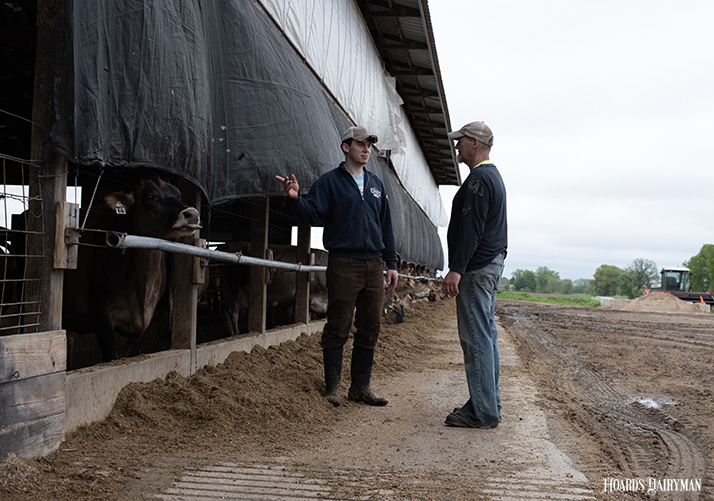
A person’s first day on the job can be filled with excitement and enthusiasm about what’s to come. How do you maintain that optimism as they settle into their new role?
“Savvy farm managers can capitalize on those feelings by creating a first day impression that is positive for every new hire,” said University of Wisconsin-Madison Division of Extension’s Jim Versweyveld.
Part of that first impression is shaped by the farm’s onboarding process for new hires. The farm management outreach specialist explained during a “Farm Management Fridays” webinar that onboarding is the process that integrates new hires into your organization.
“When onboarding is done well, it lays a foundation for long-term success for both the employee and the employer. It can improve productivity, build loyalty, engagement, and help employees become successful early in their careers with the farm,” he shared.
It takes time, but a solid onboarding plan involves more than just filling out required paperwork. Completing forms is important, but that is not what will create a lasting, positive impact that keeps employees excited about your farm.
“A robust onboarding plan includes so much more and is good for your business and your business bottom line,” Versweyveld said. That’s because it can take employees weeks or even months to reach their full potential in a new job, but an onboarding plan can reduce this lag time by introducing workers to ways to be successful early on.
Versweyveld shared five steps of effective onboarding. The first is to show your new hire that you are glad to have them on the team by offering a warm welcome. Confirm the pronunciation of their name and what they prefer to be called. Share your farm’s vision and mission statement. Make introductions to others on the team and give them a tour of the farm.
The next step is to share general information and procedures. Teach them what they need to know about the workplace. Share with them if you have a dress code, where to put their belongings while they are working, and where they can use the restroom. Clarify any key policies about cell phones or personal use of work vehicles.
Also discuss work time and pay. “It is good to set the expectations up front,” Versweyveld said. This includes overtime expectations, seasonal changes in work schedules, and call-in procedures for sick days.
Clarify the job duties and requirements. He said using a job description can help outline what is expected of the new hire and ensure you don’t miss anything during the onboarding process. This is also a good time to share the farm’s organizational chart if there is one and to discuss potential career paths if the person might be interested in advancing to a different position someday.
The fifth key is taking this opportunity to emphasize safety. Use this time to show you care about employee safety and well-being.
“One of the biggest mistakes I see farm managers make is assuming new workers are ready to work and will just figure things out,” Versweyveld stated. “Good employees are too valuable, too hard to find, and too difficult to replace to leave things to chance. Having an onboarding plan in place for your farm can reap benefits in productivity, engagement, and retention.”








